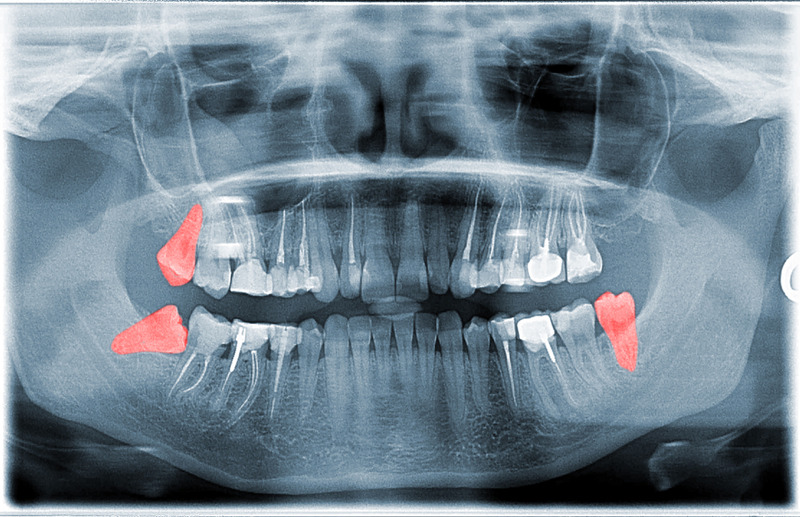Third molar teeth, often known as wisdom teeth, can cause other issues that might need surgery. Some people develop a flap of gum over the wisdom teeth, and if it becomes problematic, a dental expert may suggest an Operculectomy to remove it. The term Operculectomy sounds daunting, but it is a minor surgical procedure. Here’s what an Operculum dental treatment is, why it is needed, and what to expect after it.
What is an Operculectomy?
Operculectomy is a minor gum flap surgery performed to remove the inflamed Operculum. The Operculum is a gums or soft tissue flap over a wisdom tooth, also known as a pericoronal flap. Because of their location, at the back of the mouth, the operculum teeth are most vulnerable to impaction. Impaction usually happens when a tooth cannot fully erupt from the gum line. It can lead to pain, inflammation, and an elevated risk of infection.
When do you need Operculum dental surgery?
An Operculectomy procedure associated with an orthodontic-assisted eruption is needed if it is alleged that the position and angulation of the unerupted tooth might prevent a spontaneous eruption. The accumulation of food debris and bacteria under the loose gum flap over the wisdom tooth causes a common dental problem, ‘Pericoronitis”. Acute Pericoronitis, in more severe situations, can cause pain when eating, drinking, talking, or even opening your mouth.
When the gum is swollen or painful while biting, your dentist may recommend gum flap surgery for relief. Dental surgery is recommended when a partially erupted wisdom tooth is causing difficulty in brushing and flossing. This surgical removal of the flap of gum over a partially erupted tooth prevents further inflammation, debris, and plaque.
Is Operculum surgery painful? It sounds daunting, but Operculum surgery is a minor surgical process. The process is usually done as an outpatient and is relatively simple. You may only experience mild post-operative pain. You can speed up healing by rinsing with salt water and consuming soft foods for a few days.
What are the steps of Operculectomy?
Before starting the surgery, the dentist will inspect the tooth and use X-rays to rule out any other underlying health issues.

General anesthesia and incision
The oral surgeon will apply a local anesthetic to numb the affected area. To access the Operculum, they will make a little incision in the gum tissue once the area is completely numb.
Removal of the Operculum gum
The oral surgeon or dentist usually removes the Operculum with a scalpel or laser. In this step, removing some of the surrounding gum tissue is advisable to ensure the flap is completely removed.
Access the tooth (if mandatory)
Sometimes, the oral surgeon or dentist must make an incision to reach the tooth beneath the Operculum. To clean the tooth properly and minimize the chance of further infections, they carefully scrape the tissue to expose it.
Cleaning and stitching
The oral surgeon will carefully clean the affected area to remove debris or bacteria once the Operculum is removed. Then, they will close the incision with dissolvable stitches.
The International Journal of Current Research states that using a scalpel to remove the operculum gum is “cheap, conventional, and effective.” However, the scalpel could result in more bleeding and pain after surgery. Laser surgery gives the dentist a better perspective of the affected area. Laser surgery is more expensive but offers better post-operative healing, reduced scar tissue, and faster operations.
Aftercare instructions
After the procedure, your dentist or oral surgeon will provide you with aftercare instructions to help speed up healing and prevent alveoloplasty complications.
These detailed aftercare instructions may include the following:
- Use an antiseptic mouth rinse to keep your mouth clean
- Take pain medication
- Use an ice pack to reduce swelling
- Avoid hot foods and smoking
- Eat soft foods
- It’s crucial to clean the area around and underneath the gum flap with a single tufted brush, particularly when sore.
- Maintain good oral hygiene
- Lastly, any special instruction your dentist provides
The recovery from Operculectomy varies from person to person. Usually, after about a month, the tissues eventually recover to normal.
Also Read: How To Speed Up Wisdom Teeth Recovery
Possible risks and complications
The significant risk related to Operculectomy is the potential damage to the lingual nerve, which supplies sensation to the tongue. In the case of an injury, the patient might not be able to taste food or drink. Tongue numbness may also occur in some instances. This issue might eventually get resolved on its own or become permanent. Bleeding and infection are also possible. Sepsis could also result from an infection that enters the bloodstream. This complication entails a high potential risk as the surgical site is close to the brain.
Furthermore, the Operculum could grow again and get infected again. It would require another session of treatment. See your dentist as soon as possible if you encounter any symptoms described above or notice a flap of gum tissue covering a partially erupted wisdom tooth. Maintaining good dental hygiene to avoid painful pericoronitis requires extra care. If you need an Operculectomy, be assured that it is a quick and easy dental surgery that yields beneficial oral health results.


